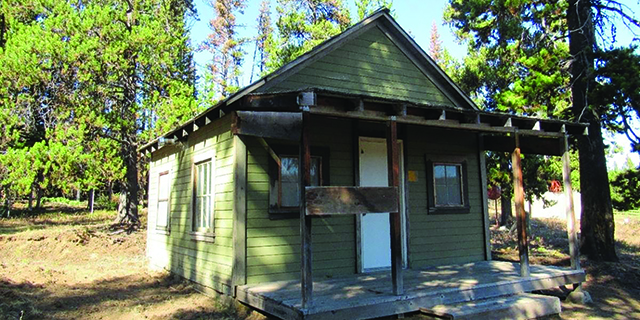The fabric of our landscape is changing
Published 10:39 am Tuesday, November 6, 2018
I will admit, I’m not a science person. I grew up in a small rural community where science was mostly considered anti-God, so you kept your distance.
We had very basic science courses in high school. I always admired people who were good at it, but that wasn’t me.
Trending
A couple months back, David Mildrexler was telling me about a team he was working with to produce a paper on rising temperatures on earth.
Heretofore, most of the measurement had been taken at surface level. Over forests, his study used satellites to measure the temperature of the leaves and branches of the tree canopy.
“Imagine the difference between the temperature of the sand and the air at the beach on a hot summer day,” said David, who earned his doctorate degree from the College of Forestry at Oregon State June 2017.
The full and complete study was published a couple weeks ago. Essentially, it shows that colder and wetter springs followed by warmer and dryer summers are the pattern in Oregon.
The research took a bit of a turn when a professor at the university suggested canopy temperatures may be a link to outbreaks of Swiss Needle Cast, which is a fungus that attacks Douglas Fir in the state.
Douglas Fir is the rock star of tree species, and anything that impacts production is potentially a problem for everyone.
Trending
Turns out, for whatever reason, Swiss Needle Cast is worse in hand-planted groves on the Oregon Coast than in forests that are a mix of tree species.
How that all plays out in the “real world” is yet to be determined, but it has been a thrill for David to be on the cutting edge of science. And it’s exciting to have someone of his degree of expertise in our community.
He, his wife and family came here around a year ago. He is an ecologist with Eastern Oregon Legacy Lands Fund and also works for Wallowology Natural History Discovery Center.
They are part of a growing number of young families who continue to seek out the lifestyle Wallowa County offers. The trend has been good for enrollment in all three county school districts.
If you’re interested in more detail about David’s work, let me know, and I will connect you.
I HAVE HAD the privilege of being part of a multi-session class on the Nez Perce, sponsored by Wallowa Land Trust. Around 50 or so have been gathering at The Place Thursdays in Joseph to learn more and broaden our horizons.
Rich Wandschneider is the chief tour guide, but he has brought in a number of fantastic speakers who have left all of us thinking at a more in-depth level.
Having been born and raised in Indian country (North Dakota has four reservations), I have known of the struggle Native Americans have faced since I was quite young.
Sakakawea, as it’s spelled per state law there, is considered a hero for her work in helping Lewis and Clark on their explorations. The state’s largest lake is named after her, impounded by the Garrison Dam.
Every fourth-grader in my day spent a chunk of the learning year on the topic, and I found it fascinating.
I have often marveled at the fact that Indian lore is by and large a spoken tradition. My German ancestors wrote everything down and compiled it into manuscripts. The two are considerably different approaches, but both serve their purpose.
I have also been impressed that the speakers for this series who have Nez Perce heritage maintain their sense of humor. When you dig into what happened to their people, it would be easy to come away cynical and angry.
It would be great to find a way to offer this series of classes to the entire community perhaps as Sunday afternoon sessions during the dark of winter.
Kudos to Land Trust executive director Kathleen Ackley for producing these presentations, and thanks for inviting me to sit in.









